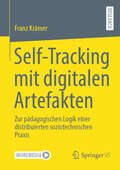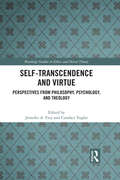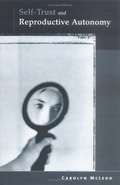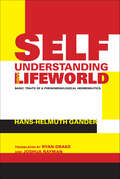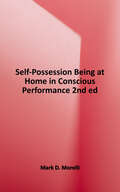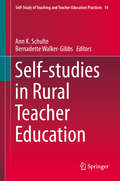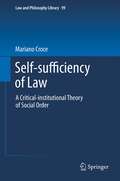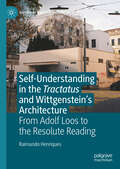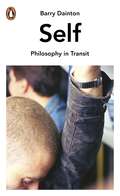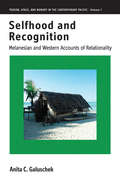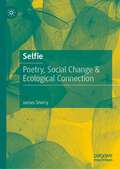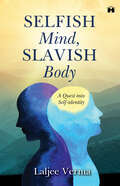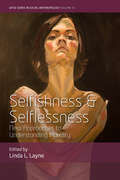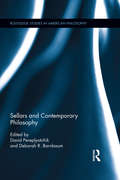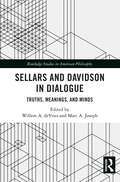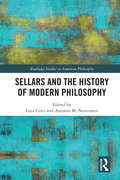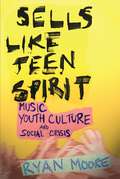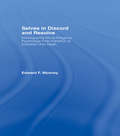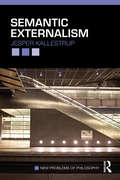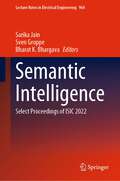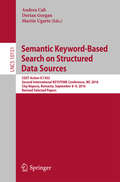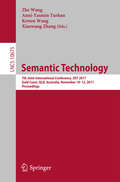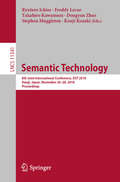- Table View
- List View
Self-Tracking mit digitalen Artefakten: Zur pädagogischen Logik einer distribuierten soziotechnischen Praxis
by Franz KrämerSelf-Tracking – etwa mit Schrittzählern, Fitness-Apps oder CO2-Trackern – steht exemplarisch für die Messregime in modernen Gesellschaften und ihren Anspruch, Verhalten zu steuern. Die pädagogischen Dimensionen dieser Praktiken sind bislang kaum systematisch erforscht. Die Studie füllt diese Lücke: Sie zeigt, wie Self-Tracking mit Lernen, Bildung, Üben und Erwachsenenerziehung verflochten ist. Empirisch fundiert rekonstruiert sie Praxen und Erfahrungen von Selbstvermesser*innen und stellt sie in Relation zu den Designs von Self-Tracking-Artefakten. Durch die Verbindung von Praxisforschung mit präzisen wie kreativen Medienanalysen eröffnet sie einen neuen Zugang zur Erforschung pädagogisierter Lebensführung – und tritt zugleich monokausalen Transformationsnarrativen der Digitalisierung kritisch entgegen. Das Buch richtet sich an Forschende, die sich mit digitaler Transformation und qualitativen Forschungszugängen zu Praktiken mit digital-materiellen Artefakten auseinandersetzen. Angesprochen sind auch Personen aus Bildungspraxis, Bildungspolitik und dem EdTech-Umfeld, die an Forschung zu den Widersprüchen und Brüchen digitaler Alltagspraktiken interessiert sind.
Self-Transcendence and Virtue: Perspectives from Philosophy, Psychology, and Theology (Routledge Studies in Ethics and Moral Theory)
by Jennifer A. Frey Candace VoglerRecent research in the humanities and social sciences suggests that individuals who understand themselves as belonging to something greater than the self—a family, community, or religious or spiritual group—often feel happier, have a deeper sense of purpose or meaning in their lives, and have overall better life outcomes than those who do not. Some positive and personality psychologists have labeled this location of the self within a broader perspective "self-transcendence." This book presents and integrates new, interdisciplinary research into virtue, happiness, and the meaning of life by re-orienting these discussions around the concept of self-transcendence. The essays are organized around three broad themes connected to self-transcendence. First, they investigate how self-transcendence helps us to understand aspects of the moral life as it is studied within psychology, including the development of wisdom, the practice of moral praise, and psychological well-being. Second, they explore how self-transcendence is linked to virtue in different religious and spiritual traditions including Judaism, Islam, Christianity, Buddhism, and Confucianism. Finally, they ask how self-transcendence can help us theorize about Aristotelean and Thomist conceptions of virtue, like hope and piety, and how this helps us to re-conceptualize happiness and meaning in life.
Self-Trust and Reproductive Autonomy
by Carolyn McleodThe power of new medical technologies, the cultural authority of physicians, and the gendered power dynamics of many patient-physician relationships can all inhibit women's reproductive freedom.
Self-Understanding and Lifeworld: Basic Traits of a Phenomenological Hermeneutics (Studies in Continental Thought)
by Hans-Helmuth GanderWhat are the foundations of human self-understanding and the value of responsible philosophical questioning? Focusing on Heidegger's early work on facticity, historicity, and the phenomenological hermeneutics of factical-historical life, Hans-Helmuth Gander develops an idea of understanding that reflects our connection with the world and other, and thus invites deep consideration of phenomenology, hermeneutics, and deconstruction. He draws usefully on Husserl's phenomenology and provides grounds for exchange with Descartes, Dilthey, Nietzsche, Gadamer, Ricoeur, and Foucault. On the way to developing a contemporary hermeneutical philosophy, Gander clarifies the human relation to self in and through conversation with Heidegger's early hermeneutics. Questions about reading and writing then follow as these are the very actions that structure human self-understanding and world understanding.
Self-possession: Being at Home in Conscious Performance
by Mark D. MorelliThis book is a meditative exploration of our inescapable and fluid relationship to the fundamental ideals of Meaning, Objectivity, Knowledge, Truth, Reality, and Value upon which we depend to inform and guide our living. It is an attempt to describe the elusive interior experience of these basic notions at work in our conscious performance. It is inspired by the work of Bernard Lonergan, but it is not an account of his ideas. It is an independent exercise in taking possession of oneself as a seeker of meaning and value. “It is as if music and color is washing over the rather austere architecture of INSIGHT, allowing it to do its real work in the life of the reader.” TOM COSGROVE, PROF. OF CIVIL ENGINEERING, U. OF LIMERICK “This book is remarkable in many ways: it is accessible and profound, humorous in a tongue-in-cheek kind of way and serious, very interesting to read in such a way that it is hard to put down, and very fundamental in confronting basic issues of human thinking and living ...” JAMES MARSH, PROFESSOR EMERITUS, PHILOSOPHY, FORDHAM U. "I could not recommend the book more highly. It is an important book." RICHARD LIDDY, SETON HALL U. "This is exactly what the doctor ordered. My thinking is that Catholic universities need to develop a core curriculum of philosophy courses that teach self-appropriation and also link self-appropriation to the skills for discerning the religious or mystical dimension of their own conscious experiences. [Self-Possession] does the former beautifully and provides a splendid intro into the second." Kenneth Melchin, Professor of Theology, St. Paul University. "Morelli's meditations are just the opposite of logic puzzles and trolley problems. [They] are existential lures into the philosophical act itself." Thomas Jeannot, Gonzaga University.
Self-studies in Rural Teacher Education
by Ann K. Schulte Bernadette Walker-GibbsThe purpose of this book is to highlight the work of teacher educators in the field of rural education. In this book, education faculty who work in teacher education study the ways in which one's identity impacts one's teaching and the partnerships with rural schools. Although the field of research on teacher preparation has an abundance of studies on preparing students for the challenges of urban settings, there is much less emphasis on rural education, despite the prevalence of rural schools. This book problematises notions of rural or rurality which is often considered via a deficit or a generalised model where a stereotype of one kind of rural is outlined. Developing more multi-faceted understandings of rurality is a key to attracting and retaining teachers who understand the complexities and opportunities of living and working in rural spaces.
Self-sufficiency of Law
by Mariano CroceThe book investigates the role of law and legal experts in the organisational dynamics of a population, demonstrating that law is a stable practice among those who (in virtue of the special knowledge they master) are called upon to select the 'normative facts' of a population, i.e. the interactional standards that are proclaimed as binding for the entire population by the publicly recognised legal experts (whose peremptory judgments can be only revised by peers). It proposes an integration of the recent research outcomes achieved in three different areas of study: legal positivism, legal institutionalism and legal pluralism and examines the notions of rule, coercion, institution, practice elaborated by significant theorists in the mentioned areas and illumine both their merits and flaws. Furthermore it advances a notion of law and a description of the legal field which are able to account for the nature of the legal filed as the cradle of the social order. new back cover copy: In an era characterized by a streaking global pluralism, the collapse of many state agencies, the emergence of multiple sources of law, and the rise of informal justice, the idea of a unitary and homogenous legal system seems old-fashioned. But philosophers, sociologists and anthropologists still hold many debates on the nature of law and its function, which is that law represents an institution that characterizes any orderly social context of human beings, and this book plunges into the center of those debates. Self-sufficiency of Law: A Critical-institutional Theory of Social Order investigates the role of law and legal experts in the organizational dynamics of a population. It demonstrates that law is a stable practice among those who are called upon to select the "normative facts" of a population, that is, the interactional standards that are proclaimed as binding for the entire population by the publicly recognized legal experts. To do this, the author proposes an integration of the recent research outcomes achieved in three different areas of study--legal positivism, legal institutionalism and legal pluralism. He examines the notions of rule, coercion, institution and practice elaborated on by significant theorists in these fields, highlighting both the merits and flaws and ultimately advancing a notion of law and a description of the legal field which are able to account for the nature of the legal field as the cradle of social order. This text covers key guidelines for empirical research and political activities in Western and non-Western countries.
Self-understanding in the Tractatus and Wittgenstein’s Architecture: From Adolf Loos to the Resolute Reading (History of Analytic Philosophy)
by Raimundo HenriquesBetween 1926 and 1928, the philosopher Ludwig Wittgenstein designed a house for his sister in Vienna (the Kundmanngasse). This book aims to clarify the relation between that house and Wittgenstein’s early philosophy. The starting point of its main argument is a remark from Diktat für Schlick (c. 1932-33) in which Wittgenstein proposes an analogy between ornaments and nonsensical sentences. The attempt to extract from it an account of the relation between the Kundmanngasse and the Tractatus Logico-Philosophicus (1921) leads to the writings of Adolf Loos (whose influence Wittgenstein recognized). The discussion of Loos’s writings suggests that the analogy should be understood, not as one between actual ornaments and nonsensical sentences, but as one between Loos’s and Wittgenstein’s uses of these notions. So understood, it favors the (so-called) resolute reading of the Tractatus and reveals that both Wittgenstein’s use of ‘nonsense’ and Loos’s use of ‘ornaments’ are means to the end of promoting self‑understanding. The book concludes that both the Kundmanngasse and the Tractatus are results of Wittgenstein’s efforts at this kind of self‑understanding. These can be construed as ways of acknowledging our humanity, which in turn can be seen as a unifying element of Wittgenstein’s philosophy.
Self: Philosophy In Transit (Philosophy in Transit)
by Barry DaintonIn the third in a new series of short, provoking books of original philosophy, acclaimed thinker Barry Dainton takes us through the nature of SelfWhen you think 'What am I?', what's actually doing the thinking? Is it a soul, or some other kind of mental entity separate from your body, or are 'you' just a collection of nerve-endings and narratives? In the third in a new series of short, provoking books of original philosophy, acclaimed thinker Barry Dainton takes us through the nature of Self and its relation to the rest of reality. Starting his journey with Descartes' claim that we are non-physical beings (even if it seems otherwise), and Locke's view that a person is self-conscious matter (though not necessarily in human form), Dainton explores how today's rapid movement of people, and information affects our understanding of self. When technology re-configures our minds, will it remake us, or kill us? If teleportation becomes possible, would it be rational to use it? Could we achieve immortality by uploading ourselves into virtual worlds? Far-reaching and witty, Self is a spirited exploration of the idea that in a constantly-changing world, we and our bodies can go their separate ways.
Selfhood and Recognition: Melanesian and Western Accounts of Relationality (Person, Space and Memory in the Contemporary Pacific #7)
by Anita C. GaluschekThe disciplines of philosophy and cultural anthropology have one thing in common: human behavior. Yet surprisingly, dialogue between the two fields has remained largely silent until now. Selfhood and Recognition combines philosophical and cultural anthropological accounts of the perception of individual action, exploring the processes through which a person recognizes the self and the other. Touching on humanity as porous, fractal, dividual, and relational, the author sheds new light on the nature of selfhood, recognition, relationality, and human life.
Selfie: Poetry, Social Change & Ecological Connection
by James SherrySelfie: Poetry, Social Change & Ecological Connection presents the first general theory that links poetry in environmental thought to poetry as an environment. James Sherry accomplishes this task with a network model of connectivity that scales from the individual to social to environmental practices. Selfie demonstrates how parts of speech, metaphor, and syntax extend bidirectionally from the writer to the world and from the writer inward to identities that promote sustainable practices. Selfie shows how connections in the biosphere scale up from operating within the body, to social structures, to the networks that science has identified for all life. The book urges readers to construct plural identifications rather than essential claims of identity in support of environmental diversity.
Selfish Mind, Slavish Body: A Quest Into Self-Identity
by Laljee VermaEvery thought, sensation, observation, and emotion is mediated by the mind, and it underpins everything that constitutes the perceived reality. But despite an exponential growth in our understanding of the mind, accounting for its nature and implications remain elusive. Selfish Mind, Slavish Body is an enlightening odyssey that investigates the fundamental nature of mind, individuality, and the self. The book distils the wisdom from both, the Eastern and Western religions, teachings of great philosophers, and profound insights from contemporary science into a singular, comprehensive source. The strength of the book lies in its attempt to simplify and unite the diverse viewpoints and conceptions from various fields. Some of the key concepts addressed in the book include: • The religious, cultural, and environmental influences that shape our perception of the world and self-identity. • The relationship between the conscious mind and the physical brain. • The conjunction between mind and the material world. • The intricacies of consciousness, subconsciousness, and ego. To put it succinctly, Selfish Mind, Slavish Body is an ambitious and creative endeavour that provides a fresh perspective on the architecture of self to uncover and understand what really resides behind what we call &‘I&’.
Selfishness and Selflessness: New Approaches to Understanding Morality (WYSE Series in Social Anthropology #10)
by Linda L. LayneWe are said to be suffering a narcissism epidemic when the need for collective action seems more pressing than ever. Selfishness and selflessness address the ‘proper’ and ‘improper’ relationship between one’s self and others. The work they do during periods of social instability and cultural change is probed in this original, interdisciplinary collection. Contributions range from an examination of how these concepts animated the eighteenth-century anti-slavery campaigners to dissecting the way middle-class mothers’ experiences illustrate gendered struggles over how much and to whom one is morally obliged to give.
Selfishness and Selflessness: New Approaches to Understanding Morality (WYSE Series in Social Anthropology #10)
by Linda L. LayneWe are said to be suffering a narcissism epidemic when the need for collective action seems more pressing than ever. The traits of Selfishness and selflessness address the ‘proper’ and ‘improper’ relationship between one’s self and others. The work they do during periods of social instability and cultural change is probed in this original, interdisciplinary collection. Contributions range from an examination of how these concepts animated the eighteenth-century anti-slavery campaigners to a dissection of the way middle-class mothers’ experiences illustrate gendered struggles over how much and to whom one is morally obliged to give.
Sellars and Contemporary Philosophy (Routledge Studies in American Philosophy)
by David Pereplyotchik Deborah R. BarnbaumWilfrid Sellars made profound and lasting contributions to nearly every area of philosophy. The aim of this collection is to highlight the continuing importance of Sellars’ work to contemporary debates. The contributors include several luminaries in Sellars scholarship, as well as members of the new generation whose work demonstrates the lasting power of Sellars’ ideas. Papers by O’Shea and Koons develop Sellars’ underexplored views concerning ethics, practical reasoning, and free will, with an emphasis on his longstanding engagement with Kant. Sachs, Hicks and Pereplyotchik relate Sellars’ views of mental phenomena to current topics in cognitive science and philosophy of mind. Fink, deVries, Price, Macbeth, Christias, and Brandom grapple with traditional Sellarsian themes, including meaning, truth, existence, and objectivity. Brandhoff provides an original account of the evolution of Sellars’ philosophy of language and his project of "pure pragmatics". The volume concludes with an author-meets-critics section centered around Robert Brandom’s recent book, From Empiricism to Expressivism: Brandom Reads Sellars, with original commentaries and replies.
Sellars and Davidson in Dialogue: Truths, Meanings, and Minds (Routledge Studies in American Philosophy)
by Willem A. deVries and Marc A. JosephWilfrid Sellars and Donald Davidson were two of the most influential American philosophers of the 20th century. This volume explores the deep similarities and differences between these two philosophers.Both Sellars and Davidson worked through the mid-to-late 20th-century re-evaluation of the empiricist inheritance that shaped what became analytic philosophy, and both are critical of key elements of that picture. In the broadest terms, both philosophers challenge the solipsistic, mentalistic conception of knowledge and meaning that informs the tradition and set in its place systems of interrelated views that prioritize a holistic and social conception of mind, action, and language. At the same time, there are several differences in method and philosophical semantics that divide Sellars and Davidson. The chapters in this volume address the deep relations of Sellars’ and Davidson’s views on mind, language, and knowledge. They demonstrate how, despite coming from different assumptions and methodologies, Sellars and Davidson converge on a view that essentially erases the philosophy of language as a separate discipline and embeds it in the philosophy of action.Sellars and Davidson in Dialogue will appeal to scholars and advanced students interested in the history of analytic philosophy, epistemology, philosophy of language, and philosophy of mind.
Sellars and the History of Modern Philosophy (Routledge Studies in American Philosophy)
by Antonio M. Nunziante Luca. CortiThis edited volume systematically addresses the connection between Wilfrid Sellars and the history of modern philosophy, exploring both the content and method of this relationship. It intends both to analyze Sellars’ position in relation to singular thinkers of the modern tradition, and to inquire into Sellars’ understanding of philosophy as a field in reflective and constructive conversation with its past. The chapters in Part I cover Sellars’ interpretation and use of Descartes, Leibniz, Hume, Kant, and Hegel. Part II features essays on his relationship with Peirce, Frege, Carnap, Wittgenstein, American pragmatism, behaviorism, and American realism, particularly his father, Roy Wood. Sellars and the History of Modern Philosophy features original contributions by many of the most renowned Sellars scholars throughout the world. It offers an exhaustive survey of Sellars’ views on the historical antecedents and meta-philosophical aspects of his thought.
Selling a ‘Just’ War
by Michael J. ButlerButler sheds light on how American political leaders sell the decision to intervene with military force to the public and how a just war frame is employed in US foreign policy. He provides three post-Cold War examples of foreign policy crises: the Persian Gulf War (1990-91), Kosovo (1999), and Afghanistan (2001).
Sells like Teen Spirit: Music, Youth Culture, and Social Crisis
by Ryan MooreThis account of modern rock music &“skillfully articulates the brutal social truths that compel young people to create meaning and subculture out of chaos&” (Donna Gaines, author of Teenage Wasteland). In Sells Like Teen Spirit, Ryan Moore tells the story of how music and youth culture have changed along with the economic, political, and cultural transformations of American society over four decades. By attending concerts, hanging out in dance clubs and after-hour bars, and examining the do-it-yourself music scene, Moore gives a riveting, first-hand account of the sights, sounds, and smells of &“teen spirit.&” Moore traces the histories of punk, hardcore, heavy metal, glam, thrash, alternative rock, grunge, and riot grrrl music, and relates them to wider social changes that have taken place. Alongside the thirty images of concert photos, zines, flyers, and album covers in the book, Moore offers original interpretations of the music of a wide range of bands including Black Sabbath, Black Flag, Metallica, Nirvana, and Sleater-Kinney. Written in a lively, witty style, Sells Like Teen Spiritsuggests a more hopeful attitude about the ways that music can be used as a counter to an overly commercialized culture, showcasing recent musical innovations by youth that emphasize democratic participation and creative self-expression—even at the cost of potential copyright infringement. &“Brilliantly situates the histories of several musical styles within the political, economic, and social changes that led to the development of an assortment of rock subgenres . . . engaging.&” —Journal of Youth and Adolescence
Selves in Discord and Resolve: Kierkegaard's Moral-Religious Psychology From Either/Or to Sickness Unto Death
by Edward MooneyIn Selves in Discord and Resolve, Edward Mooney examines the Wittgensteinian and deconstructive accounts of subjectivity to illuminate the rich legacy left by Kierkegaard's representation of the self in modes of self-understanding and self-articulation. Mooney situates Kierkegaard in the context of a post-Nietzschean crisis of individualism, and evokes the Socratric influences on Kierkegaard's thinking and shows how Kierkegaard's philsophy relies upon the Socratic care for the soul. He examines Kierkegaard's work on Judge Wilhelm, from Either/Or, Socrates, in the Postscript and Abraham and Job in Repetition and Fear and Trembling.
Semantic Externalism (New Problems of Philosophy)
by Jesper KallestrupSemantic externalism is the view that the meanings of referring terms, and the contents of beliefs that are expressed by those terms, are not fully determined by factors internal to the speaker but are instead bound up with the environment. The debate about semantic externalism is one of the most important but difficult topics in philosophy of mind and language, and has consequences for our understanding of the role of social institutions and the physical environment in constituting language and the mind. In this long-needed book, Jesper Kallestrup provides an invaluable map of the problem. Beginning with a thorough introduction to the theories of descriptivism and referentialism and the work of Frege and Kripke, Kallestrup moves on to analyse Putnam’s Twin Earth argument, Burge’s arthritis argument and Davidson’s Swampman argument. He also discusses how semantic externalism is at the heart of important topics such as indexical thoughts, epistemological skepticism, self-knowledge, and mental causation. Including chapter summaries, a glossary of terms, and an annotated guide to further reading, Semantic Externalism an ideal guide for students studying philosophy of language and philosophy of mind.
Semantic Intelligence: Select Proceedings of ISIC 2022 (Lecture Notes in Electrical Engineering #964)
by Sven Groppe Bharat K. Bhargava Sarika JainThis book constitutes refereed proceedings of the 2nd International Semantic Intelligence Conference (ISIC 2022). This book covers a wide range of topics, including semantic web engineering, ontology-based data access, multimodal and multilingual access, machine-to-machine communications and interoperability, knowledge extraction and ontology learning from the web, computational paradigms and computational intelligence, distributed and mobile systems, and many others. This book includes novel contributions and the latest developments from researchers across industry and academia. This book serves as a valuable reference resource for academics and researchers across the globe.
Semantic Keyword-Based Search on Structured Data Sources: COST Action IC1302 Second International KEYSTONE Conference, IKC 2016, Cluj-Napoca, Romania, September 8–9, 2016, Revised Selected Papers (Lecture Notes in Computer Science #10151)
by Andrea Calì Dorian Gorgan Martín UgarteThis book constitutes the thoroughly refereed post-conference proceedings of the Second COST Action IC1302 International KEYSTONE Conference on Semantic Keyword-Based Search on Structured Data Sources, IKC 2016, held in Cluj-Napoca, Romania, in September 2016. The 15 revised full papers and 2 invited papers are reviewed and selected from 18 initial submissions and cover the areas of keyword extraction, natural language searches, graph databases, information retrieval techniques for keyword search and document retrieval.
Semantic Technology: 7th Joint International Conference, JIST 2017, Gold Coast, QLD, Australia, November 10-12, 2017, Proceedings (Lecture Notes in Computer Science #10675)
by Zhe Wang Anni-Yasmin Turhan Kewen Wang Xiaowang ZhangThis book constitutes the thoroughly refereed proceedings of the 7th Joint International Semantic Technology Conference, JIST 2017, held in Goldcoast, QLD, Australia, in November 2017. The 19 full papers and 4 short papers presented were carefully reviewed and selected from 37 submissions. They present applications of semantic technologies, theoretical results, new algorithms and tools to facilitate the adoption of semantic technologies and are organized in topical sections on ontology and data management; ontology reasoning; linked data and query; information retrieval and knowledge discovery; knowledge graphs; and applications of semantic technologies.
Semantic Technology: 8th Joint International Conference, JIST 2018, Awaji, Japan, November 26–28, 2018, Proceedings (Lecture Notes in Computer Science #11341)
by Kouji Kozaki Dongyan Zhao Freddy Lecue Ryutaro Ichise Takahiro Kawamura Stephen MuggletonThis book constitutes the thoroughly refereed proceedings of the 8th Joint International Semantic Technology Conference, JIST 2018, held in Awaji, Japan, in November 2018. The 23 full papers and 6 short papers presented were carefully reviewed and selected from 75 submissions. They present applications of semantic technologies, theoretical results, new algorithms and tools to facilitate the adoption of semantic technologies and are organized in topical sections on knowledge graphs; data management; question answering and NLP; ontology and reasoning; government open data; and semantic web for life sciences.
